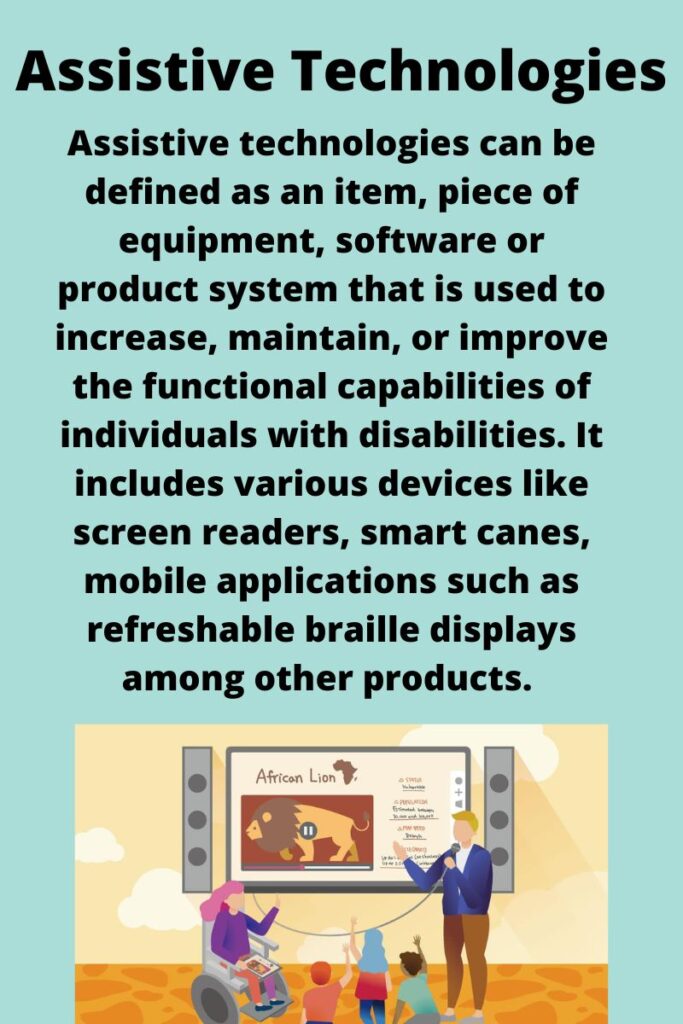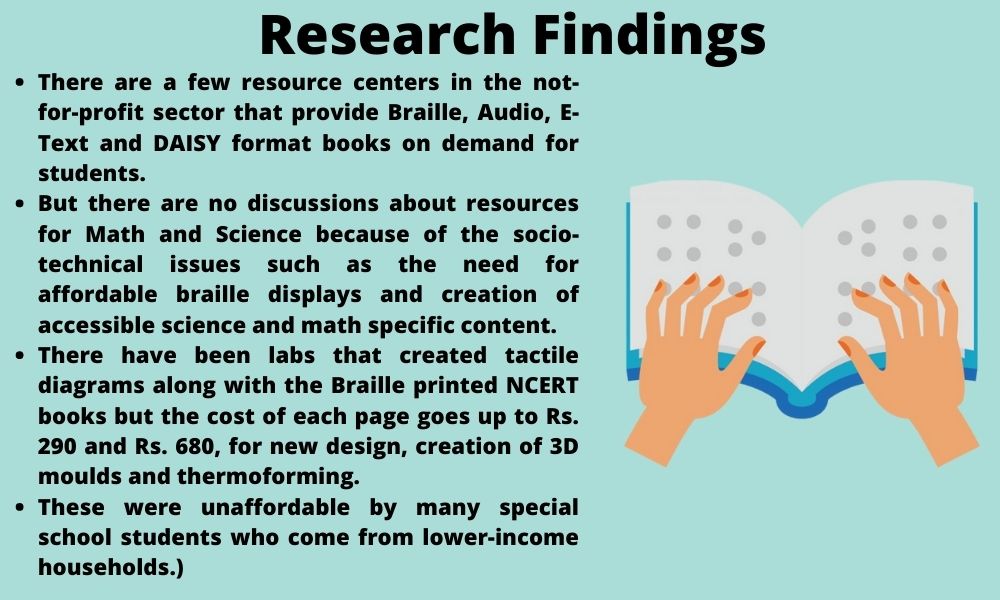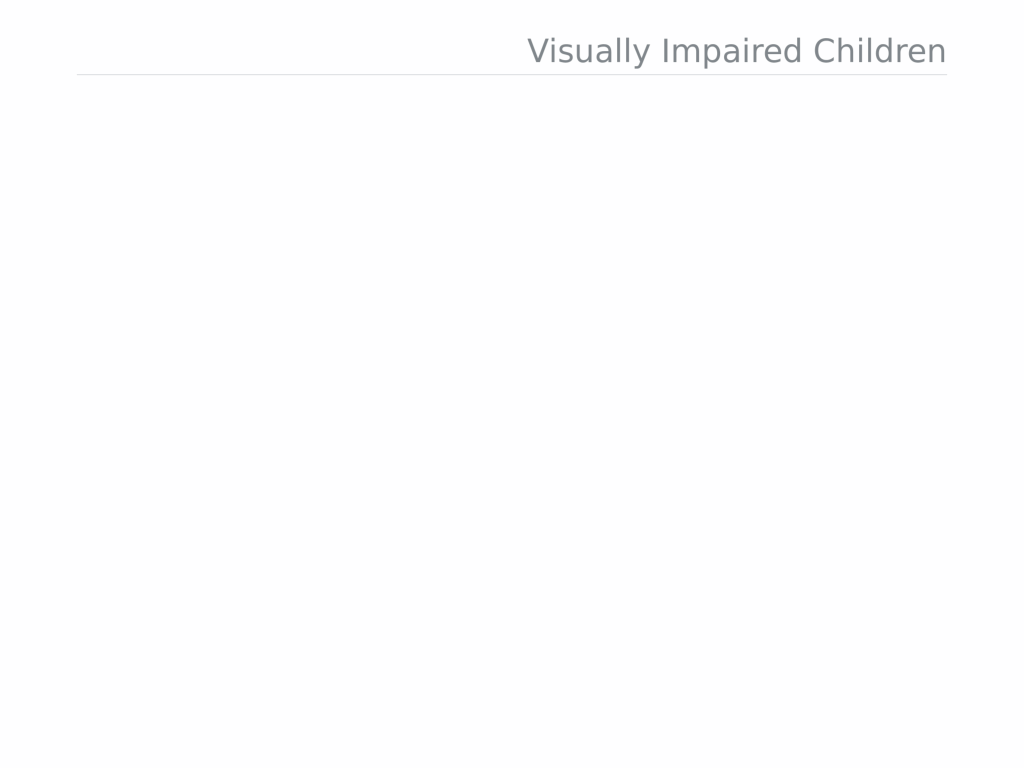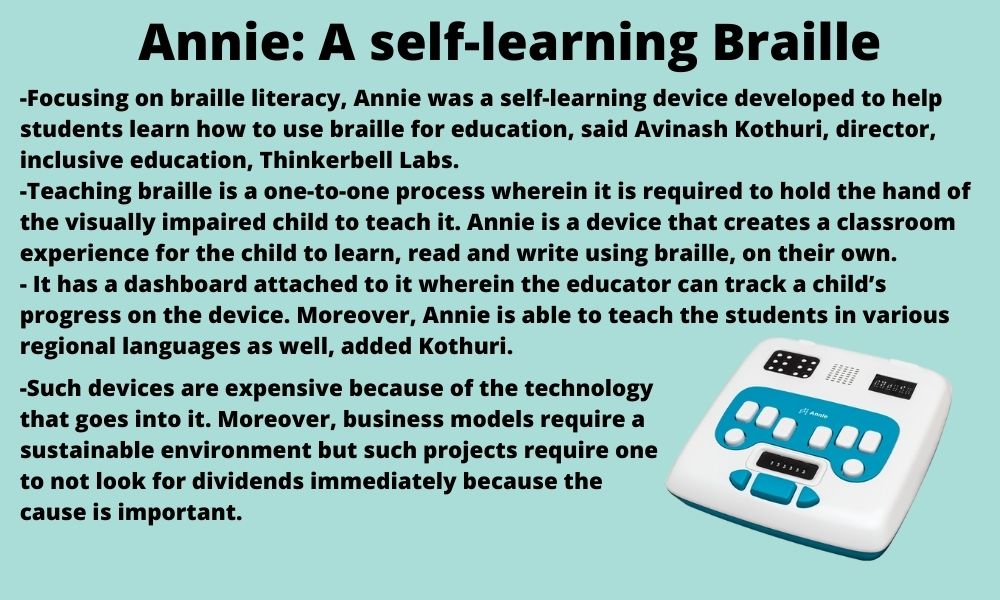Schools have not been able to bring in electronic braille devices, accessible study material, 3D models and tactile diagrams for making science and mathematics inclusive.
Tapas Bharadwaj, a visually impaired working professional faced several challenges during his education years. The teachers in inclusive schools didn’t understand the functions of Braille. Tapas struggled to study through audio recordings of study materials. Juggling with the screen reader and the teacher speaking at the same time, Tapas was always worried about understanding concepts quickly. He still wonders if specially-abled children have strong basics. Moreover, he wondered why braille books are not available at stationery shops along with other books. He thought of why education is still not inclusive for visually impaired children.
Despite growing research in technology, Indian schools do not use full potential of assistive technologies for visually impaired children wherein children have never experienced learning through 3-dimensional (3D) models, tactile diagrams and screen readers.
According to a study in Karnataka schools, just one braille book is available for the entire class. Moreover, the students in the school for the blind were not exposed to 3D models or tactile diagrams. This was proved with an experiment where 70 percent children were not able to relate to a tactile diagram of a flower.
Moreover, people who took Mathematics in high school were exempted from learning Calculus, Geometry or Trignometry for their exams. Supriya Dey, managing trustee, Vision Empower Trust and researcher for the quoted study said that children lack an appropriate level of reading comprehension for their ages. Hence, the aptitude for science and mathematics comes later. The technology to have a database for resource material that is accessible for visually impaired is a major requirement right now, Dey said
Technology is needed to replace braille books because they are hefty. It is not possible to have braille for all books, Dey said. Moreover, for science and mathematics apart from better technology to teach these subjects, special educators are needed. Most special schools for the blind have teachers who are blind and had not studied these subjects in their schools, Dey further said.
“We have braille equipment, computers and Digital accessible information system (DAISY) players for assistive technologies. For Science and Mathematics, we teach the students till seventh standard because beyond that the subjects require a lot of diagrammatic representations and practical experiments and we do not have the required technology for them,” said Dr. Dattu Agrawal, chairman, Matoshree Ambubai Residential School for Blind Girls.

Assistive technologies
Some schools have been using 3D models and tactile diagrams for educating visually impaired children. “3D models are needed for understanding science-related concepts like understanding the structure of a heart or a kidney. Moreover, students cannot learn about arteries and DNA molecules without actually understanding how these structures are built,” said Ashwini Angadi, founder trustee and special educator at Belaku Academy.
Visually impaired students in fields of Science and Mathematics lack representation as they are exempted from these subjects during high school. Joyce Bosco, in-charge of Barimaeus, Organization For The Blind, .said that she has never seen any student with a major in science or mathematics. Their organization provides computer training to the students who have finished their undergraduate and/or postgraduate degrees. “They come from backgrounds in English or Kannada literature, history or economics. They are trained for the Job Access WithSpeech (JAWS) software which helps them access computers with only-audio features. Students have taken jobs in banks or insurance companies requiring knowledge about computers,” Bosco added.

Issues with inclusion
The government has not adequately addressed various aspects of inclusive education. There is a need to mandate to make the books accessible for the students, said Bhardwaj, Project expert, inclusive education, Vidhi Centre for Legal Policy. The education for children requires tactile diagrams not only for science and mathematics but also for learning concepts like names of fruits. Beyond that, students need to experience inclusivity even for recreational activities through use of sound balls for cricket, for instance. “If there are laws for inclusive education why not have a provision for assistive technologies to mandate their use for quality education?” questioned Bharadwaj.
Since these suggestions are made at discretionary levels, not many schools choose to explore the technologies and bring in devices, he added. With no incentive for compliance, schools often do not even know about tactile diagrams.
The exemption of Science and Mathematics subjects was amended through the law and the students were allowed to appear for these exams. Earlier this exemption used to kill children’s motivation for these subjects even when they should know the basics to appear for competitive exams; such exams always have math questions, Bharadwaj added.
But the removal of the exemption has not changed much because schools still continue to exempt students from these subjects. “Even if I cannot pour the hydrochloric acid in a beaker because it is risky, I should still definitely know what it is,” he added.
“Nowadays, screen reading technique is readily available and almost free of cost,” said Prashant Ranjan Verma, general secretary, National Association for the Blind and an assistive technologies expert. Teachers have been protective of braille but electronic reading devices and refreshable braille devices can be easy to use and carry, Verma added.

Moreover, the non-availability of appropriate models and tactile diagrams is because the schools lack capacity in converting all diagrams in tactile readable forms. The technology to address lab work for the students has been expensive. There are no talking/assistive devices in labs to help children identify colors and solutions for experiments, Verma further said. But in India, beyond affordability, there are implementation issues in usage of assistive technology. Most blind schools are run either by the government or non-governmental organizations who mostly do not about it and they require funds for basic devices first like providing laptops or smartphones to students for in-built screen readers, Verma said.
More than technological barriers, there are attitudinal barriers that exclude visually impaired from education, said Divyanshu Ganatra, a visually impaired working professional and disability inclusion worker. “Exempting students from science and mathematics is an easy way out for the authorities even when these subjects can be taught. Moreover, the issue is more fundamental in the fact that there are special schools that isolate children from the mainstream,” Ganatra said. The attitude that other people decide what a visually impaired child can do or not do is also a barrier that needs to be addressed, he said.





